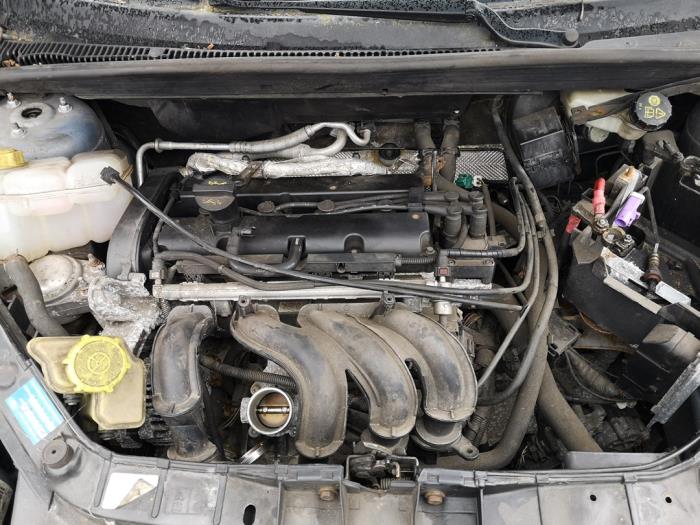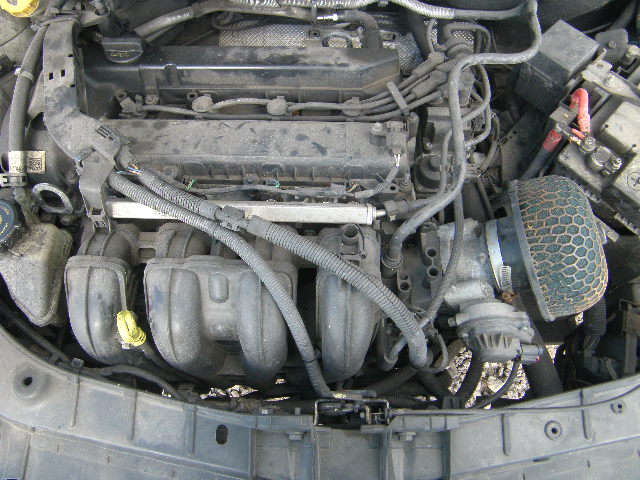Troubleshooting Ford Fiesta Engine Problems: What You Need to Know
Troubleshooting Ford Fiesta Engine Problems: What You Need to Know
Blog Article
Checking Out the Development of Engines: From Classic Layouts to Modern Marvels
The evolution of engine innovation represents a significant story in the background of advancement, marked by pivotal advancements that have constantly redefined transport and sector. From the initial heavy steam engines that powered the Industrial Change to the appearance of internal combustion engines that changed wheelchair, each phase has added to higher efficiency and capacity. Presently, the transition to electrical power signifies not just a technological shift but also a more comprehensive commitment to environmental sustainability. As we check out these landmarks, one must think about how the future of engine design might unfold, testing our perceptions of power and efficiency.
The Birth of Engine Technology
The introduction of engine technology marked a turning point in human advancement, changing power conversion and transportation. The earliest engines emerged from the demand to harness mechanical power for useful use, leading to the growth of tools that converted numerous power types right into activity. The idea of the engine can be mapped back to ancient human beings, where easy machines, such as the waterwheel and windmill, used all-natural pressures to do work. However, it was during the late 17th and early 18th centuries that significant innovations started to emerge.
The development of the inner burning engine and the invention of the steam engine militarized an extensive change in commercial abilities. These engines not only enhanced efficiency yet additionally broadened the range of human movement, enabling unmatched transport possibilities. The very early prototypes prepared for the mechanical world, assisting in the increase of industries and improving societal frameworks.
As engine styles evolved, they included ingenious products and advanced design principles, leading the way for modern-day developments - ford fiesta engine. The birth of engine modern technology fired up an unrelenting search of performance and power, establishing the phase for the dynamic evolution of transport and commercial machinery that would certainly adhere to
Heavy Steam Engines and Their Impact

The heavy steam engine's impact was specifically apparent in the transport field (ford fiesta engine). Steam-powered locomotives facilitated the quick movement of goods and individuals across huge distances, effectively reducing the geographical barriers that had actually previously prevented trade and interaction. Steamships reinvented marine travel, allowing for quicker and extra reputable crossings of rivers and oceans.
In industry, heavy steam engines powered manufacturing facilities, allowing mass manufacturing and the increase of metropolitan centers as hubs of economic task. Vapor modern technology cultivated innovations in engineering and production procedures, laying the foundation for future developments in engine style.
The Increase of Interior Combustion
Often eclipsing heavy steam power, the increase of internal burning engines noted a transformative change in transport and sector throughout the late 19th and early 20th centuries. The development of these engines, characterized by their capacity to shed fuel within the engine itself, allowed higher efficiency and power contrasted to typical vapor engines. Pioneering innovators such as Nikolaus Otto and Rudolf Diesel played essential duties in click here for info improving engine designs, leading to prevalent adoption in cars, watercrafts, and commercial machinery.
The internal combustion engine's portable size and relatively light-weight nature assisted in the development of individual automobiles, transforming individual flexibility and reshaping urban landscapes. By making it possible for faster travel and the reliable transport of items, these engines militarized economic development and promoted globalization. The flexibility of gas choices, consisting of fuel and diesel, additionally improved their allure, permitting for diverse applications throughout different sectors.
In spite of the environmental problems that would later on arise, the first allure of inner combustion modern technology stocked its transformative potential. As culture embraced this technology, the foundation was laid for modern-day transportation systems, developing internal combustion engines as a keystone of industrial innovation and life throughout the 20th century.
Advancements in Engine Performance
As internal burning engines ended up being integral to transport and market, the focus changed in the direction of improving their effectiveness to fulfill expanding needs for performance and sustainability. Innovations in engine layout, product scientific research, and technology have actually significantly contributed to this evolution.
One major improvement is the growth of turbocharging, which permits for raised air consumption, resulting in more complete fuel combustion and boosted power result without expanding engine size. In addition, variable valve timing systems have actually been executed to maximize engine efficiency across various RPM arrays, thus improving fuel effectiveness.
The application of advanced fuel injection innovations, such as straight shot, has actually also played a crucial function. This technique allows for more exact control over the fuel-air mixture, advertising far better burning and lowering exhausts. Lightweight products, consisting of light weight aluminum and composite parts, have been embraced to minimize general engine weight, leading to boosted performance.
These developments reflect a broader pattern within the automobile industry, where the harmony between design advancement and environmental considerations drives the continuous quest for greater effectiveness in internal burning engines. Because of this, modern engines are now much more powerful, cleaner, and reliable than ever, leading the method for a more lasting future in transportation.
The Change to Electric Power
With growing problems over ecological impact and fossil fuel dependence, Visit Your URL the automobile industry is experiencing a substantial shift towards electrical power. This transition is driven by a mix of technological advancements, governing pressures, and altering customer choices. Electric cars (EVs) offer a compelling option to typical interior combustion engines, flaunting minimized greenhouse gas emissions and lower operating expense.
The surge of battery innovation has actually been a video game changer, with lithium-ion batteries becoming more economical and effective. Improved energy thickness and faster billing capacities have made EVs much more sensible for day-to-day use. Federal governments worldwide are executing motivations and establishing ambitious targets for phasing out fossil gas lorries, consequently accelerating the fostering of electric power.
As charging facilities expands and battery technology proceeds to enhance, the shift to electrical power is poised to reshape the auto landscape, promoting sustainability and advancement in the years to come. The future of transportation is electric, and the momentum is undeniable.
Conclusion
The advancement of engine modern technology represents a considerable you could check here trajectory of development that has exceptionally affected transportation and industry. From the fundamental steam engines to the transformative interior combustion engines, each growth has actually added to enhanced mobility and financial growth. The existing shift towards electric power highlights an important commitment to sustainability, driven by advancements in battery modern technology. This ongoing evolution not only mirrors altering social requirements but likewise highlights the potential for a cleaner and much more effective future in engine design.

Report this page